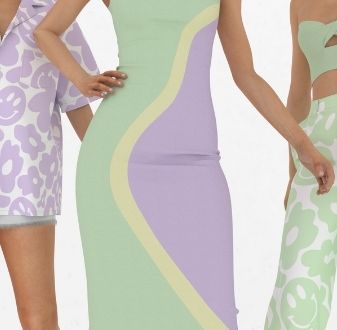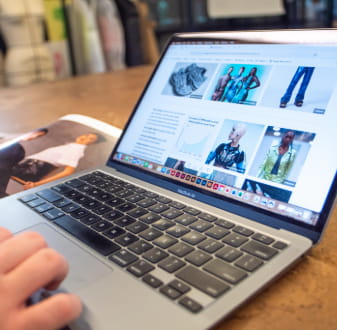The term “fashion-forward” has never carried more meaning than in today’s tech-savvy industry. Around the world, designers and labels have found innovative ways to transform all facets of fashion, from what the customer sees to how a garment is designed to end-to-end business operations. At Billy Blue College of Design at Torrens University Australia, we make sure you’re across the latest technologies that are shaping the future of fashion.
The future of fashion
With the industry estimated to be worth $1.5 trillion a year, fashion technology is growing at a pace not seen before. When you consider the last couple of years alone, the landscape has changed drastically as digital fashion gains momentum and emerging technologies such as AI, VR and AR are being embraced, including in pedagogy.
Technology in fashion
While there are countless examples of fashion technology and innovation, let’s look at virtual mirrors and digital rendering – both of which Billy Blue students are learning to leverage.
Virtual mirrors
Virtual mirrors offer a new dimension to experiential shopping for consumers. In recent times, demand for low-touch shopping experiences has grown, making virtual mirrors and fitting rooms more popular than ever. In fact, the virtual fitting room market is projected to grow to $6.5 million globally by 2025.
So, what is it? A virtual mirror uses AR technology to show a user how an item of clothing will appear on them without physically trying it on. This allows customers to:
- See outfits in different lighting, such as day and night
- Find the right style, colour and fit
- Spend less time trying on clothes
What ties all three together? Convenience. Research shows that 97% of consumers have ditched a shopping purchase because the process wasn’t convenient enough. Virtual fitting rooms, then, not only enhance the customer experience, but boost business too. On top of that, companies like ShopExp are simultaneously reducing environmental waste by building a sustainable supply chain and using AI-enabled digital technologies.
Virtual mirrors in action
Recently, we had two students bring to life their very own interactive mirror installation. Ivica Gokchevski, a 3D Design and Animation graduate, teamed up with Bachelor of Branded Fashion Design grad Ceren Narli to bring to life Ceren’s graduate collection CANAVAR.
Ivica had previously worked with our friends at HoMie to transform an exclusive fashion collection into a 3D showcase, which launched at this year’s Melbourne Fashion Week.
“I am amazed by how not just 3D in general, but animation is changing the digital world,” says Ivica. “Digital fashion is increasing rapidly, brands are able to showcase their products in a more unique way than ever – and it’s going to stay that way.”
The use of technology in fashion has opened Ceren’s eyes to a whole new world of opportunity, where digital technologies and inter-disciplinary collaborations like the ones at Billy Blue will become more and more necessary.
“As we move into uncertain futures and futures where digital spaces are becoming more important than ever, I believe fashion design must move to also accommodate new digital technologies, like 3D fashion design and animation,” says Ceren.
How it started...
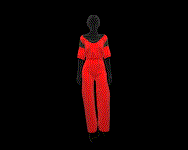
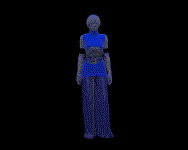
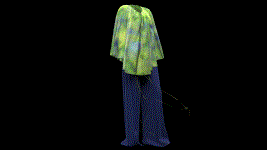
How it ended...
Digital rendering
As 3D fashion design software programs like CLO gain popularity, digital rendering continues to shape the fashion world. Using cutting-edge simulation technologies, CLO transforms garment designs into true-to-life visualisations. This allows users to tweak designs and picture variations in real time. Digital rendering goes hand in hand with sustainable fashion, which is already trending. In fact, “Digital designs and 3D assets are now a key technology in fashion supply chains,” says Vogue Business.
Two branded fashion design students at Billy Blue utilised CLO to bring their final collections to life. Let’s take a look.
Georgia Bellingham, Belling
Producing a final collection in the middle of a global pandemic is no easy feat. But thanks to fashion technology, Georgia was able to switch her approach and present her collection, Belling, as 3D renderings rather than physical garments.
“I learnt all my practical sewing skills and I was going to implement them into my final graduate project, however lockdown had many implications – fabric was delayed and I was unable to conduct photoshoots – so I had to figure out a different way to tackle my project,” says Georgia, who turned to CLO for the first time. “I was able to produce my garments digitally, perform a digital photoshoot and create a digital brand video that showcased the garments moving.”
Ruby Gallo, Tesoro
Throughout the development of her collection, Ruby was drawn to digital fashion and what it means for the environment. As well as having her garments manufactured, Ruby collaborated with a Digital Media student, Mathew Sapulovic to create a digital representation of Tesoro.
“Combining the realms of physical authenticity and digital technology offers the best experience, not only for customers but also for our planet,” says Ruby. “The wellbeing of all things living is extremely important and we strive to do better than what we are already doing every day.”
Looking back on the project, Matthew said, "Literal game changer for fashion and sustainability from pipeline to production. I can't really emphasis enough how huge of a shift in technology this is. Using CLO as a tool bypasses the need for multiple physical iterations of garments and quickly gives designers the ability to sample designs with unlimited fabric options, waste free. More importantly, CLO enables artists young and aspiring to break into what was a challenging fashion market."
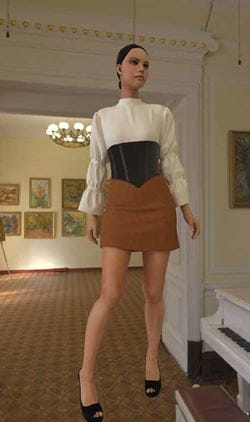
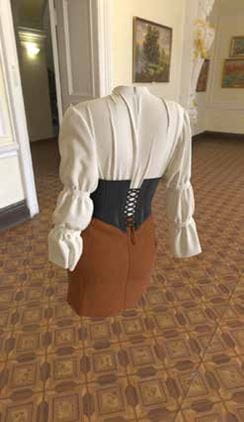
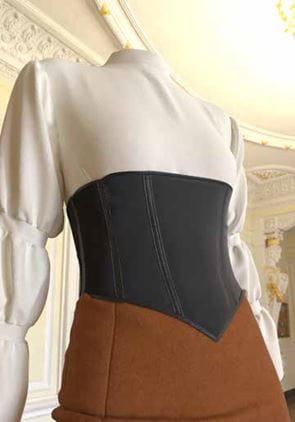
All students aforementioned – Ceren, Ruby and Georgia – have demonstrated key attributes of the 21st century fashion leader through their projects. They are flexible problem solvers who have the ability to collaborate through cross-disciplinary interaction. Whilst technology in fashion is not an end unto itself, students at Torrens University are well placed to navigate the branding, production and consumer engagement opportunities that will continue to challenge and shape the industry.
Watch this video showcasing our students who are redefining the fashion portfolio:

